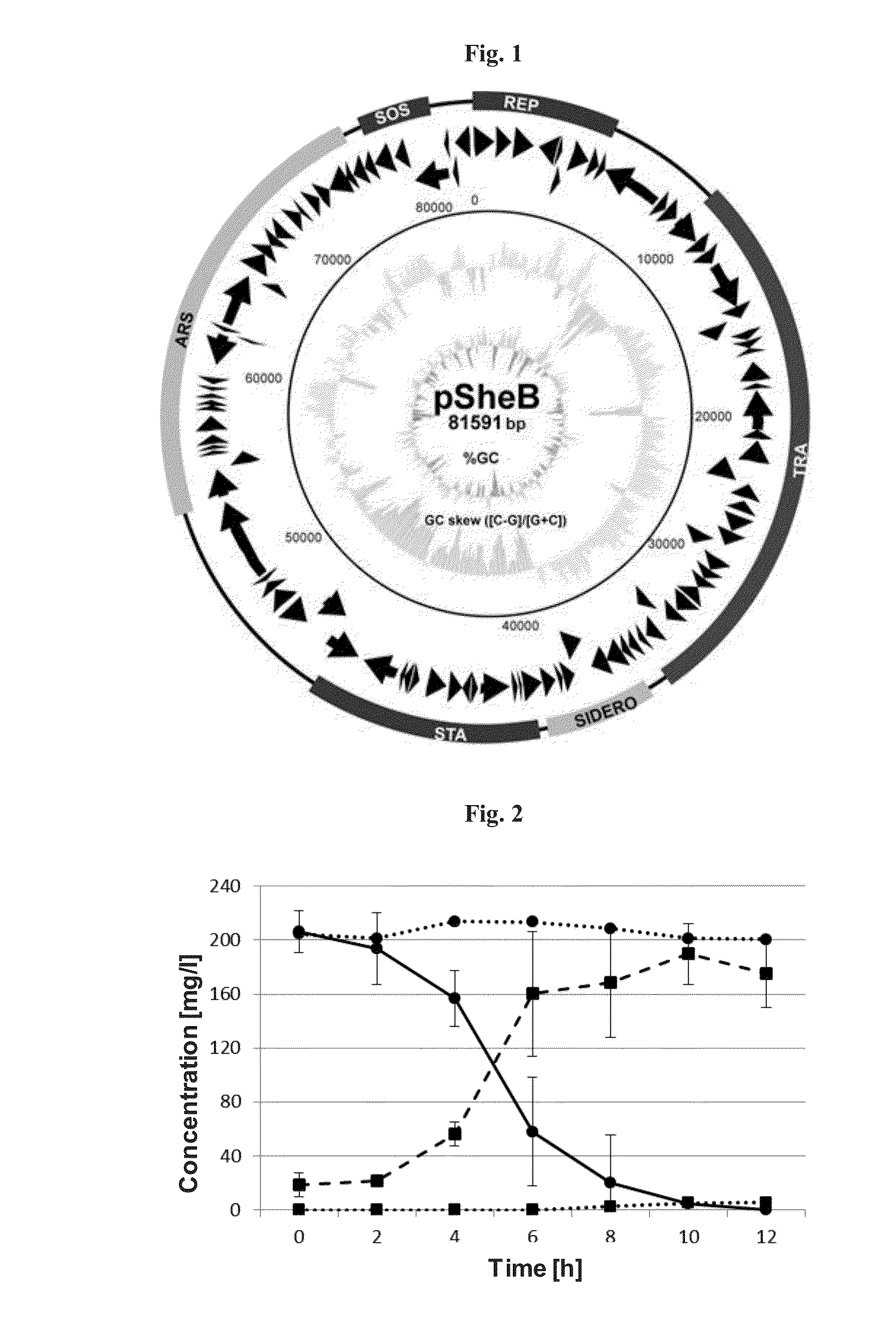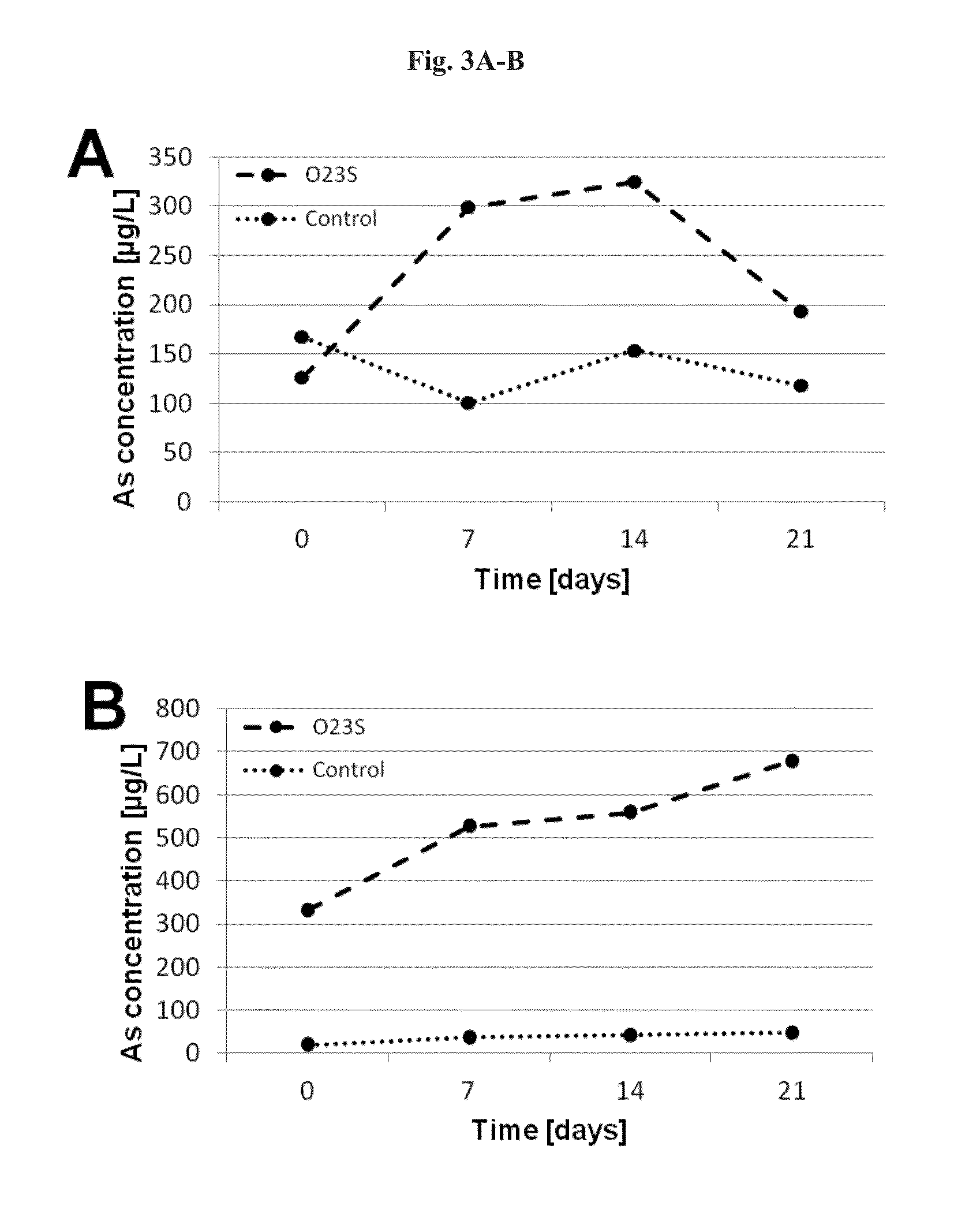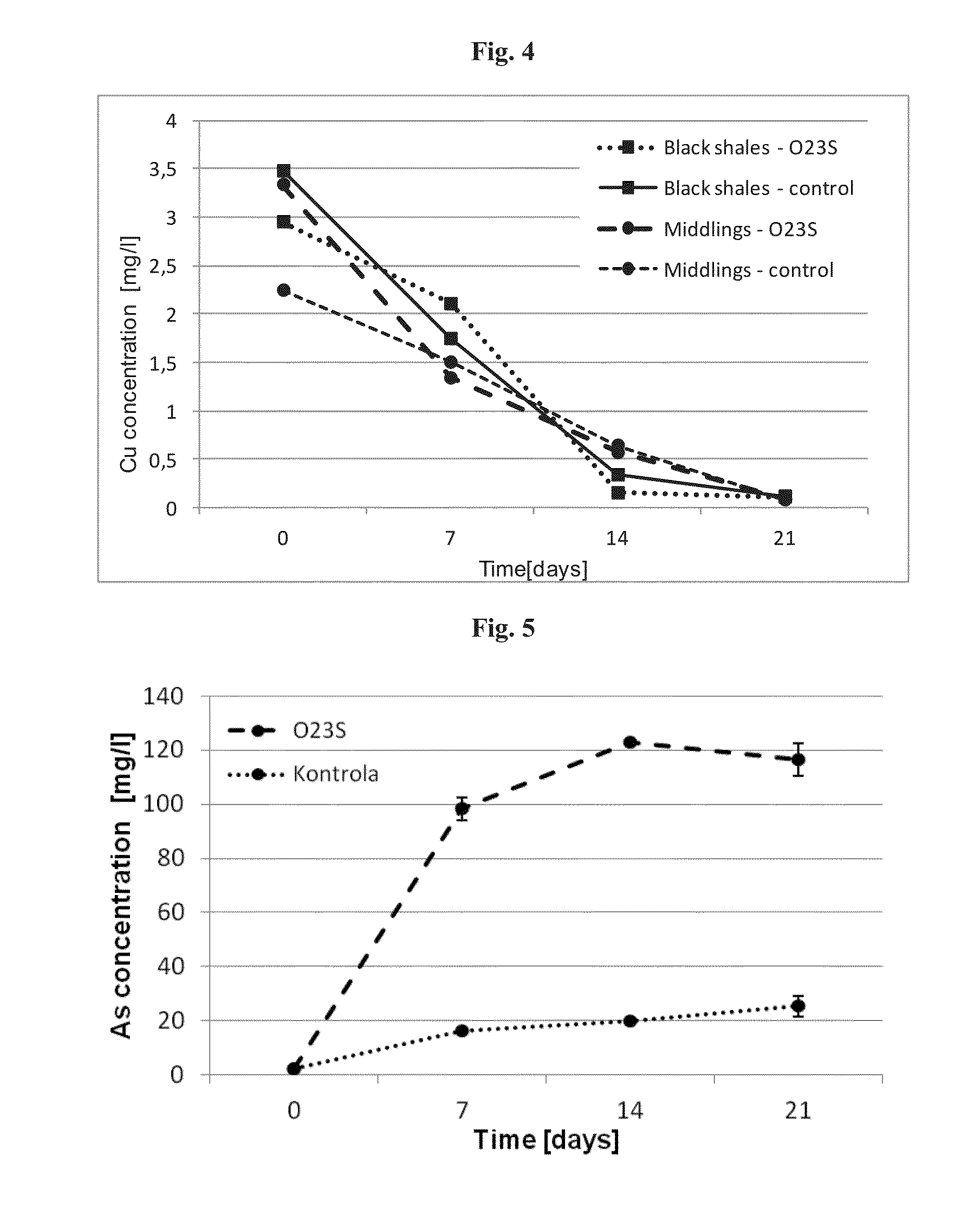Removal of arsenic using a dissimilatory arsenic reductase
a technology of dissimilatory arsenic and reductase, which is applied in the field ofplasmid psheb, can solve the problems of non-specific methods, insufficient and insufficient traditional copper flotation systems for separation and division of sulfide, and major threat to the environmen
- Summary
- Abstract
- Description
- Claims
- Application Information
AI Technical Summary
Benefits of technology
Problems solved by technology
Method used
Image
Examples
example 1
[0045]Characteristics of the Plasmid pSheB and Determination of its Complete Sequence
[0046]Plasmid pSheB, of the size of 81 kbp, was isolated from the Shewanella sp. O23S strain. In order to sequence the plasmid, plasmid pSheB was isolated from 200 ml of overnight culture of Shewanella sp. O23S by alkaline lysis method. Plasmid pSheB was sequenced by pyrosequencing method, using “shotgun” strategy on the GS FIX Titanium (454) sequencer (in the Oligo Pl. centre). For the construction of the DNA library, approx. 5 μg of pSheB DNA was used and reagent kits provided by the manufacturer were applied ((GS FLX Titanium Library Preparation Kit, Roche). The constructed library was sequenced and assembled using the software from the Newbler de novo assembler package (Roche). The obtained sequences were then assembled into contigs using Seqman software from Lasergene package (DNAStar). Annotation of the plasmid (identification of the open reading frames and determination of their potential fun...
example 2
[0047]Construction of the Plasmid-Less Strain and Functional Analysis of the Plasmid pSheB
[0048]In order to show, that the plasmid pSheB and the gene module coding for potential proteins located within it, are involved in the resistance to arsenic and dissimilatory arsenates reduction, a plasmid-less derivative of the Shewanella sp. O23S strain was constructed and its functional analysis was carried out. As the stress factor stimulating the mechanisms of plasmid removal from the cells of the host, ethidium bromide (EtBr) solution at a final concentration of 5 μM was used.
[0049]Overnight culture of the wild-type Shewanella sp. O23S strain, carried out in LB medium supplemented with 5 mM sodium arsenate was passaged to LB medium with 5 μM EtBr. The optical density (OD) of the culture at the beginning of the experiment was OD=0.1, and the culture was carried out for 24 hours at 22° C. with shaking (160 rpm). After 24 hours of incubation, culture dilutions 10−4,−6,−8,−10 were prepared, ...
example 3
Construction of the Vector Carrying a Gene Module Coding for the Proteins Involved in Dissimilatory Arsenate Reduction
[0059]In order to demonstrate, which genes located on the plasmid pSheB encode proteins responsible for dissimilatory arsenate reduction, the arr module, which may comprise i.a. genes for dissimilatory arsenate reductase arrAB, was cloned into the vector pBBR1-MCS2 (Km), in the Escherichia coli TOP 10 strain, and its functionality was tested.
[0060]In order to clone the arr module, amplification of a DNA fragment of the size 8634 by (which may comprise the region from position 63978 to 72599 in the genome of pSheB) was performed on a DNA template of the plasmid pSheB, isolated by alkaline lysis. For PCR reaction, the following oligonucleotides were used as primers:
[0061]She_Mph1103F: GAAATCTTGCAGTAGCGATGCATC (SEQ ID NO: 4) [position in the genome of the plasmid pSheB: 63978-64001; the underlined sequence is the restriction site recognized by the enzyme Mph 11031 (NsiI...
PUM
| Property | Measurement | Unit |
|---|---|---|
| concentrations | aaaaa | aaaaa |
| particle sizes | aaaaa | aaaaa |
| temperature | aaaaa | aaaaa |
Abstract
Description
Claims
Application Information
 Login to View More
Login to View More - R&D
- Intellectual Property
- Life Sciences
- Materials
- Tech Scout
- Unparalleled Data Quality
- Higher Quality Content
- 60% Fewer Hallucinations
Browse by: Latest US Patents, China's latest patents, Technical Efficacy Thesaurus, Application Domain, Technology Topic, Popular Technical Reports.
© 2025 PatSnap. All rights reserved.Legal|Privacy policy|Modern Slavery Act Transparency Statement|Sitemap|About US| Contact US: help@patsnap.com



